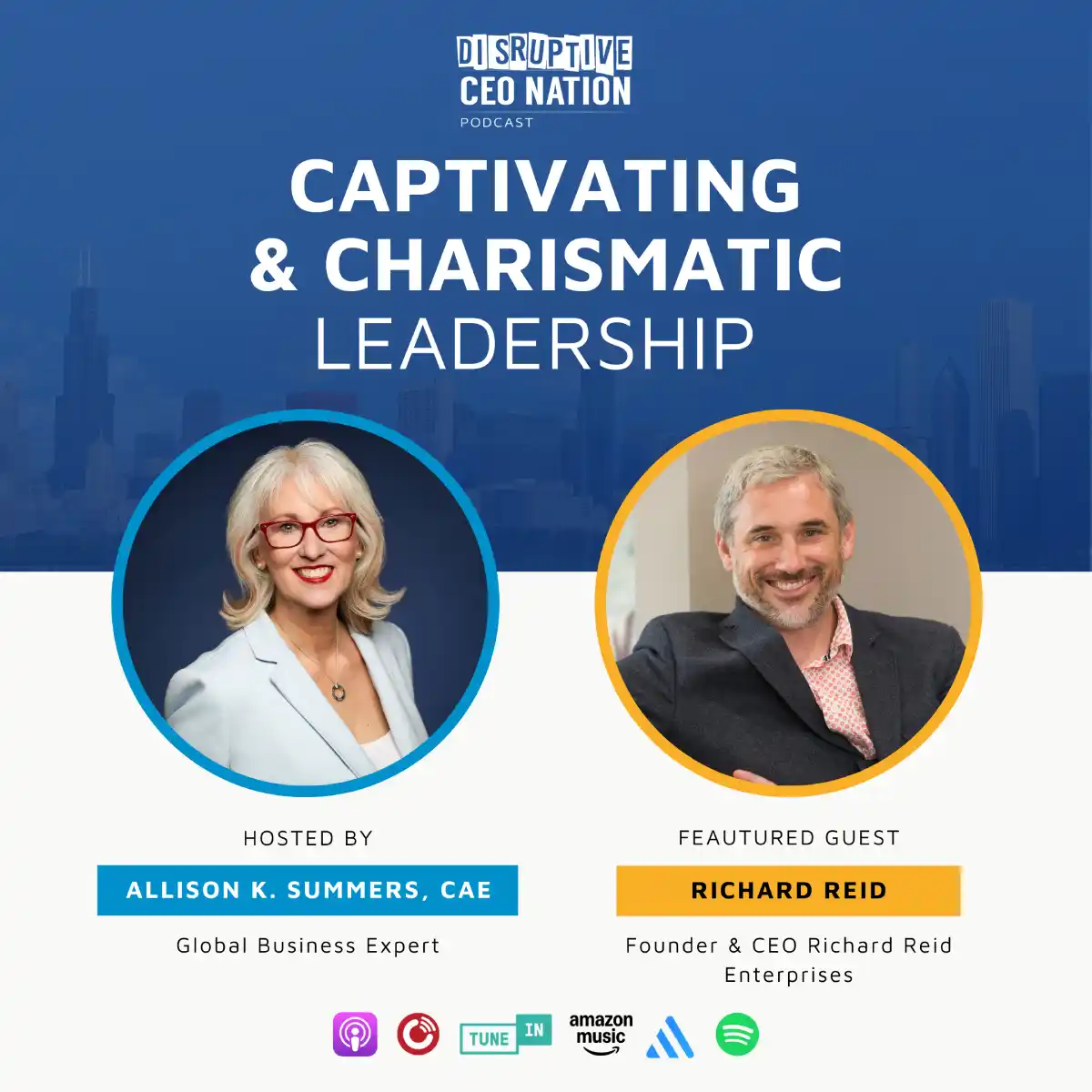Executive Summary
In today’s rapidly evolving business landscape, the strategic necessity of creating an inclusive work environment has never been more pronounced. This whitepaper delves into the concept of inclusion in the workplace, its benefits, challenges, and practical strategies for implementation. Drawing from academic research and real-world examples, we provide business leaders and entrepreneurs with actionable insights to foster an environment where diversity is celebrated and every employee can thrive.
Table of Contents
- Introduction
- Understanding Inclusion in the Workplace
- The Business Case for Inclusion
- Challenges to Creating an Inclusive Environment
- Strategies for Fostering Inclusion
- Measuring the Impact of Inclusion Initiatives
- Case Studies: Successful Inclusion Programs
- The Future of Workplace Inclusion
- Conclusion
- References
1. Introduction
As the global marketplace becomes increasingly interconnected and diverse, organisations that embrace inclusion position themselves for long-term success. Inclusion goes beyond diversity; it is about creating a work environment where all employees feel valued, respected, and empowered to contribute their unique perspectives and talents.
This whitepaper aims to provide business leaders and entrepreneurs with a comprehensive understanding of workplace inclusion, its significance, and practical, actionable strategies for implementation. By leveraging academic research and real-world examples, we offer insights that can help transform organisational cultures and drive business success through the power of inclusion.
2. Understanding Inclusion in the Workplace
Defining Inclusion
Inclusion in the workplace refers to the practices and cultural norms that support a diverse workforce and ensure that all employees feel valued, respected, and able to contribute fully to the organisation’s success. While diversity focuses on differences within a setting, inclusion actively involves employees’ ideas, knowledge, perspectives, approaches, and styles to maximise business success (Roberson, 2006).
The Relationship Between Diversity and Inclusion
Diversity and inclusion are often mentioned together, but they are distinct concepts. Diversity is representation—the presence of varied identities and experiences within an organisation. Inclusion, on the other hand, is about participation and empowerment. As Sherbin and Rashid (2017) note, “In the context of the workplace, diversity equals representation. Without inclusion, however, the crucial connections that attract diverse talent, encourage participation, foster innovation, and lead to business growth will not happen.”
Key Elements of an Inclusive Workplace
Several key elements characterize an inclusive workplace:
- Psychological Safety: Employees feel safe to take risks, voice their opinions, and be authentic without fear of negative consequences (Edmondson, 1999).
- Equal Opportunities: All employees have equal opportunities for advancement, development, and recognition.
- Collaborative Decision-Making: Diverse perspectives are sought and considered in decision-making processes.
- Cultural Competence: The organisation and its leaders understand and appreciate cultural differences.
- Inclusive Leadership: Leaders model inclusive behaviours and hold themselves and others accountable for fostering an inclusive environment.
3. The Business Case for Inclusion
Enhanced Innovation and Creativity
Diverse teams that feel included are more innovative. A study by Boston Consulting Group found that companies with above-average diversity on their management teams reported innovation revenue 19 percentage points higher than companies with below-average leadership diversity (Lorenzo et al., 2018).
Improved Financial Performance
McKinsey & Company’s research consistently shows a correlation between diversity (a precursor to inclusion) and financial performance. Their 2020 report found that companies in the top quartile for gender diversity on executive teams were 25% more likely to have above-average profitability than companies in the fourth quartile (Dixon-Fyle et al., 2020).
Increased Employee Engagement and Retention
Inclusive environments foster higher employee engagement. Deloitte’s research shows that organisations with inclusive cultures are six times more likely to be innovative and agile, eight times more likely to achieve better business outcomes, and twice as likely to meet or exceed financial targets (Bourke & Dillon, 2018).
Enhanced Problem-Solving and Decision-Making
Diverse groups make better decisions. Research by Cloverpop found that inclusive decision-making processes can lead to better business decisions up to 87% of the time (Larson, 2017).
Expanded Market Reach
Inclusive companies are better positioned to understand and serve diverse customer bases. A study by Harvard Business Review found that teams with inclusive leaders are 17% more likely to report high performance, 20% more likely to say they make high-quality decisions, and 29% more likely to report behaving collaboratively (Bourke & Espedido, 2019).
4. Challenges to Creating an Inclusive Environment
Unconscious Bias
Unconscious biases are social stereotypes about certain groups of people that individuals form outside their conscious awareness. These biases can significantly impact decision-making processes, from hiring and promotions to day-to-day interactions (Greenwald & Krieger, 2006).
Resistance to Change
Organisational change, including shifts towards more inclusive practices, often faces resistance. This can stem from a fear of the unknown, which is a common psychological barrier to change. Employees may fear that they will not be able to adapt to the new practices, or that the changes will bring about negative consequences. Addressing these fears and providing reassurance can help mitigate this form of resistance to change (Kotter & Schlesinger, 2008).
Lack of Leadership Buy-In
Without strong support from top leadership, inclusion initiatives may struggle to gain traction. Leaders are crucial in setting the tone for organisational culture and allocating resources to inclusion efforts (Nishii & Mayer, 2009).
Measuring and Demonstrating Impact
Quantifying the impact of inclusion initiatives can be challenging, making it difficult to justify continued investment in these programs (Roberson, 2006).
Intersectionality and Complexity
Individuals often belong to multiple identity groups, and their experiences of inclusion (or exclusion) can be complex and intersectional. Addressing these nuanced experiences requires a sophisticated approach to inclusion (Crenshaw, 1989).
5. Strategies for Fostering Inclusion
1. Develop Inclusive Leadership
Inclusive leadership is crucial for fostering an inclusive environment. Leaders should:
- Model inclusive behaviours
- Actively seek out diverse perspectives
- Challenge their own biases
- Hold themselves and others accountable for inclusive practices
2. Implement Unconscious Bias Training
While not a panacea, unconscious bias training can raise awareness and provide tools to mitigate bias. Practical bias training should:
- Focus on awareness and strategies for bias mitigation
- Be ongoing rather than a one-time event
- Be coupled with structural changes to support bias reduction
3. Create Inclusive Policies and Practices
Review and revise organisational policies and practices to ensure they support inclusion. This might include:
- Implementing flexible work arrangements
- Ensuring equitable promotion and development opportunities
- Creating inclusive benefits packages (e.g., parental leave for all genders)
- Establishing clear anti-discrimination and harassment policies
4. Foster Psychological Safety
Psychological safety—the belief that one can speak up without risk of punishment or humiliation—is crucial for inclusion. Strategies to enhance psychological safety include:
- Encouraging open communication
- Treating mistakes as learning opportunities
- Actively soliciting input from all team members
- Demonstrating vulnerability as a leader
5. Promote Employee Resource Groups (ERGs)
ERGs can play a vital role in fostering inclusion. These groups:
- Provide support and networking opportunities
- Offer insights to leadership about employee experiences
- Contribute to professional development
- Help in the recruitment and retention of diverse talent
6. Implement Inclusive Communication Practices
Communication plays a crucial role in fostering inclusion. Strategies include:
- Using inclusive language
- Ensuring all voices are heard in meetings
- Providing multiple channels for feedback and ideas
- Translating materials into multiple languages where relevant
7. Establish Mentoring and Sponsorship Programs
Mentoring and sponsorship can help underrepresented groups navigate organisational structures and advance their careers. These programs should:
- Be structured and goal-oriented
- Include cross-cultural and reverse mentoring options
- Be monitored for effectiveness and adjusted as needed
6. Measuring the Impact of Inclusion Initiatives
Quantitative Metrics
- Diversity Demographics: Track representation across various levels of the organisation.
- Employee Engagement Scores: Use surveys to measure feelings of inclusion and belonging.
- Retention Rates: Compare retention rates across different demographic groups.
- Promotion Rates: Analyze the equity of career advancement opportunities.
- Pay Equity: Regularly audit and address any pay disparities.
Qualitative Measures
- Employee Feedback: Conduct focus groups and interviews to gather in-depth insights.
- Exit Interviews: Understand why employees leave and if lack of inclusion is a factor.
- Cultural Assessments: Perform regular assessments of organisational culture.
Business Impact Metrics
- Innovation Metrics: Track new ideas generated and implemented.
- Customer Satisfaction: Monitor how increased internal diversity and inclusion affect customer experiences.
- Financial Performance: Analyze the correlation between inclusion initiatives and financial outcomes.
7. Case Studies: Successful Inclusion Programs
Accenture: Setting Clear Goals and Measuring Progress
Accenture has set specific, measurable goals for increasing diversity and fostering inclusion. They aim to achieve a gender-balanced workforce by 2025 and have already increased the percentage of women in their workforce from 32% to 44% between 2015 and 2020. Their approach includes:
- Setting clear, public goals
- Implementing unconscious bias training for all employees
- Offering employee resource groups
- Providing inclusive leadership training
Salesforce: Pay Equity and Transparency
Salesforce has made a public commitment to pay equity, conducting annual audits and making adjustments where necessary. Their approach includes:
- Regular pay equity assessments and adjustments
- Transparency in reporting their progress
- Inclusive hiring and promotion practices
Microsoft: Inclusive Product Design
Microsoft has embedded inclusion into their product development process, resulting in more accessible and user-friendly products. Their approach includes:
- Diverse design teams
- User testing with diverse groups
- Accessibility features built into products from the start
8. The Future of Workplace Inclusion
1. Artificial Intelligence and Inclusion
AI has the potential to both help and hinder inclusion efforts. While AI can help reduce human bias in hiring and performance evaluations, it can also perpetuate biases if not carefully designed and monitored. Organisations will need to be vigilant about the ethical implications of AI in their inclusion efforts.
2. Remote and Hybrid Work
The shift towards remote and hybrid work models presents opportunities and challenges for inclusion. While it can increase access for some groups (e.g., people with disabilities, working parents), it can also create new forms of exclusion (e.g., digital divide, proximity bias). Organisations must develop new strategies for fostering inclusion in distributed work environments.
3. Generational Diversity
As workplaces increasingly span five generations, organisations must navigate different expectations and work styles. Inclusion efforts will need to account for generational differences while avoiding stereotypes.
4. Intersectionality
There is growing recognition of the importance of intersectionality in inclusion efforts. Future initiatives will likely take a more nuanced approach, recognising that individuals have multiple, intersecting identities that shape their experiences.
5. Neurodiversity
The inclusion of neurodiverse individuals (e.g., those with autism, ADHD, and dyslexia) is gaining attention. Organisations are likely to develop more programs to recruit, support, and leverage the unique strengths of neurodiverse employees.
9. Conclusion
Creating an inclusive work environment where everyone can thrive is not just a moral imperative but a business necessity. The research is clear: organisations that successfully foster inclusion reap significant benefits, from increased innovation and improved financial performance to enhanced employee engagement and expanded market reach.
However, building an inclusive workplace is an ongoing journey that requires commitment, strategy, and continuous effort. It involves developing inclusive leadership, implementing bias mitigation strategies, creating inclusive policies and practices, fostering psychological safety, and consistently measuring and improving inclusion efforts.
As we look to the future, new challenges and opportunities will emerge, from leveraging AI ethically to fostering inclusion in remote work environments. Organisations that can adapt their inclusion strategies to meet these evolving needs will be well-positioned for success in an increasingly diverse and interconnected world.
By embracing the power of inclusion, business leaders and entrepreneurs can create workplaces where all employees feel valued, respected, and empowered to contribute their best work. In doing so, they not only enhance the lives of their employees but also drive innovation, improve performance, and position their organisations for long-term success in a diverse global marketplace.
10. References
Bezrukova, K., Spell, C. S., Perry, J. L., & Jehn, K. A. (2016). A meta-analytical integration of over 40 years of research on diversity training evaluation. Psychological Bulletin, 142(11), 1227-1274.
Bourke, J., & Dillon, B. (2016). The six signature traits of inclusive leadership. Deloitte Insights.
Bourke, J., & Dillon, B. (2018). The diversity and inclusion revolution: Eight powerful truths. Deloitte Review, pp. 22, 82–95.
Bourke, J., & Espedido, A. (2019). Why inclusive leaders are suitable for organisations, and how to become one. Harvard Business Review.
Crenshaw, K. (1989). Demarginalising the intersection of race and sex: A black feminist critique of antidiscrimination doctrine, feminist theory and antiracist politics. University of Chicago Legal Forum, 1989(1), 139–167.
Dixon-Fyle, S., Dolan, K., Hunt, V., & Prince, S. (2020). Diversity wins: How inclusion matters. McKinsey & Company.
Edmondson, A. (1999). Psychological safety and learning behaviour in work teams. Administrative Science Quarterly, 44(2), 350–383.
Greenwald, A. G., & Krieger, L. H. (2006). Implicit bias: Scientific foundations. California Law Review, 94(4), 945-967.
Kotter, J. P., & Schlesinger, L. A. (2008). Choosing strategies for change. Harvard Business Review, 86(7/8), 130-139.
Larson, E. (2017). New research: Diversity + inclusion = better decision-making at work. Forbes.
Lorenzo, R., Voigt, N., Tsusaka, M., Krentz, M., & Abouzahr, K. (2018). How diverse leadership teams boost innovation. Boston Consulting Group.
Nishii, L. H., & Mayer, D. M. (2009). Do inclusive leaders help to reduce turnover in diverse groups? The leader-member exchange’s moderating role is in the turnover relationship’s diversity. Journal of Applied Psychology, 94(6), 1412–1426.
Roberson, Q. M. (2006). Disentangling the meanings of diversity and inclusion in organisations. Group & Organization Management, 31(2), 212-236.
Sherbin, L., & Rashid, R. (2017). Diversity does not stick without inclusion. Harvard Business Review.










